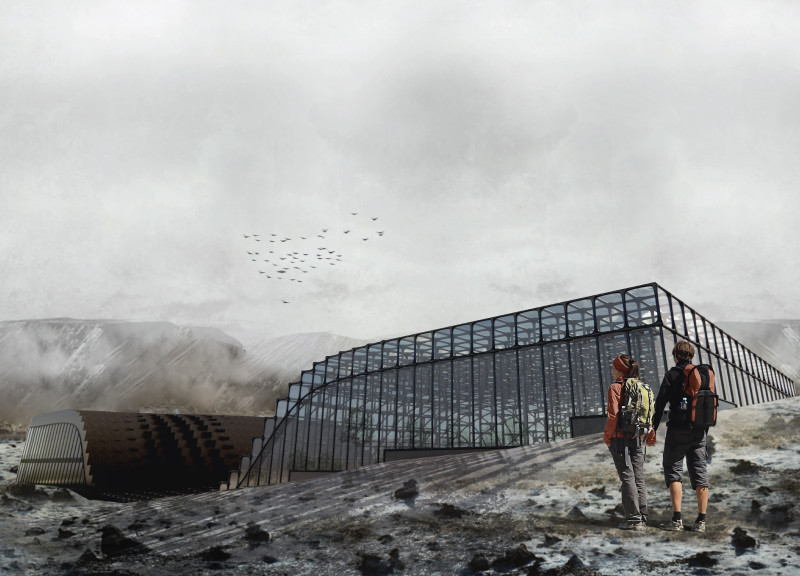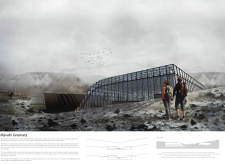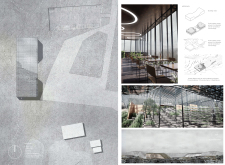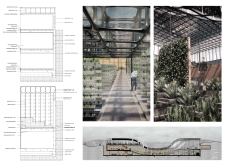5 key facts about this project
The building is structured in multiple layers, consisting of distinct zones dedicated to various functions. The ground floor features the main entrance, services, and greenhouses, while the upper floors house the dining areas. The functionality of each component is enhanced through thoughtful planning, ensuring that guests can engage directly with the production of their food in a visually appealing setting.
Sustainable Design Approaches
One of the unique aspects of the Myvatn Greenary is its integration of green architectural practices. The building's design employs sustainable materials, including concrete for structural support, glass for natural lighting, and wood for interior finishes, creating a harmonious blend of durability and aesthetics. The partial embedding of the structure in the landscape minimizes visual impact while maximizing energy efficiency. This innovative approach not only aids in thermal insulation but also enhances the overall experience by creating a stable environment conducive to the growth of various plants.
Visitors are provided with opportunities to engage with the greenhouse environment throughout their dining experience. The layout encourages exploration, allowing guests to witness the connection between their food sources and the surrounding landscape. This level of engagement promotes awareness of sustainability in agriculture and dining practices, setting the Myvatn Greenary apart from conventional dining establishments.
Connection to Geography and Local Culture
The location of the Myvatn Greenary is intrinsically tied to its design. Situated amidst geologically active regions, this project reflects the natural beauty and environmental significance of Iceland. The architectural design considers the unique characteristics of the surrounding terrain, with the layout and materials chosen to complement the local ecosystem. The transparent glass walls provide unobstructed views of the landscape, creating a dialogue between the interior space and the natural surroundings. The thoughtful incorporation of elements that pay homage to local culture and environment distinguishes this project, offering a comprehensive understanding of Icelandic identity through architecture.
For those seeking a deeper understanding of the Myvatn Greenary project, exploring the architectural plans, sections, and design ideas will provide further insights into its innovative features and the thought processes behind its creation. Engaging with these elements will shed light on the design's functional and aesthetic considerations, illustrating how the project achieves its goals of sustainability and connectivity with nature.


























